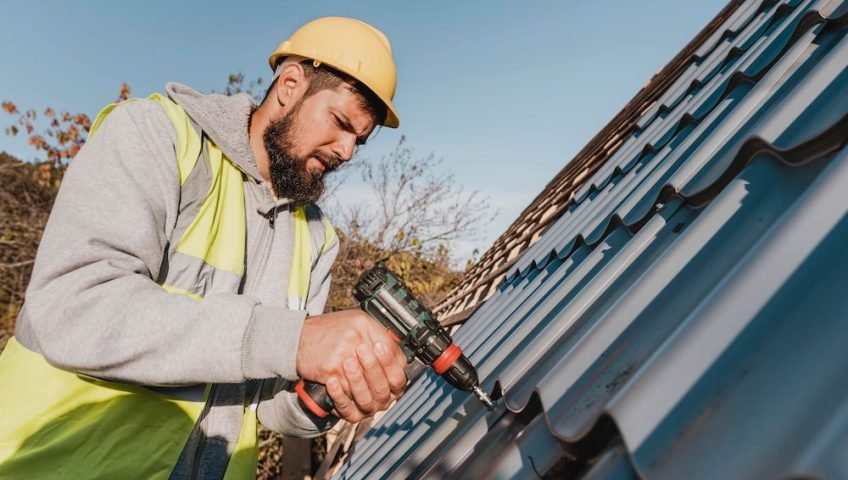A roof isn’t just part of a house—it’s the structure’s first line of defense. Over time, wear and tear from storms, sunlight, and seasonal changes can erode its performance. While repairs and patches may offer temporary relief, there comes a time when a complete roof replacement becomes necessary. Homeowners often struggle with the decision to replace rather than repair, not knowing the tipping point. We will explore the signs that indicate it’s time for a new roof and walk through a detailed, ground-up look at how the replacement process works.
Recognizing the Moment: Knowing When Repairs Aren’t Enough
Many homeowners delay full roof replacement due to cost concerns or a belief that repairs can prolong the life of their roof. While minor issues like a missing shingle or a small leak can be patched, persistent problems that keep returning often signal deeper structural weaknesses. Water stains on ceilings, curling shingles, excessive granule loss, sagging rooflines, or daylight showing through attic boards all indicate that the underlying system may be compromised. In some cases, mold and mildew on interior walls could even stem from long-term roof leakage, which remains undetected until the damage has spread significantly.
Ignoring these red flags can lead to expensive structural repairs and even safety risks for those living under the roof. Replacing the entire roof is not a cosmetic upgrade—it is a preventive investment. It provides a fresh slate, ensuring the new system is sound from the decking up and aligns with modern materials and current building codes. A full replacement means no longer patching symptoms but resolving the underlying cause once and for all. Homeowners searching for lasting solutions often turn to reliable providers like Superior Roofing near Windham to ensure the job is done with long-term protection in mind.
A Thoughtful Beginning: Planning for a Full Roof Replacement
Once the decision to replace the roof is made, the process begins long before a single shingle is removed. The planning phase involves a full inspection to assess the extent of the deterioration and identify any potential hazards hidden beneath the visible surface. It’s also the stage where homeowners select new materials, often choosing upgrades in energy efficiency, aesthetics, or wind and impact resistance. The planning also involves logistics—estimating costs, preparing schedules, and ensuring all permits and local code requirements are met. This upfront investment in preparation ensures the job is not only completed properly but also minimizes unexpected delays or oversights.
Superior Roofing understands the importance of these early steps. A thoughtful consultation and clear communication at this point sets the tone for a successful project. Homeowners who feel informed and involved from the outset tend to experience less stress and greater satisfaction when the project is complete.
From the Top Down: The Tear-Off Phase and Why It Matters
The actual work begins with tearing off the old roofing system, down to the decking. This step is more than just demolition—it’s a critical inspection phase. Removing the layers allows roofers to examine what’s been hidden for years: rotten wood, pest damage, mold, or warping. This is where shortcuts in the past, like layering shingles over old ones, become apparent. A full tear-off provides a clean foundation for the new roof. The exposed decking can be repaired or replaced, giving assurance that the structural base is sound and able to support the next decades of roofing.
During this phase, proper disposal of the debris is essential. Roofing waste can be heavy and dangerous, and an organized, respectful cleanup plan helps protect the property and its surroundings. Superior Roofing approaches this stage with attention to detail, ensuring that nothing gets left behind to pose future issues. The tear-off is not simply removal—it’s the beginning of long-term reliability.
Building Something Better: Installing the New Roofing System
Once the structure has been cleared and secured, the real transformation begins. Underlayment is applied as a moisture barrier to protect the decking. Next comes flashing around vulnerable areas such as chimneys, skylights, and valleys—these elements help direct water away from seams. Shingle or roofing panel installation follows, depending on the material chosen. Whether asphalt, metal, or architectural shingles, each type has its own method and timeline for secure installation. The process includes attention to ventilation, which is often overlooked in older roofs.
Proper airflow through ridge vents or soffits helps regulate attic temperature, prevent moisture buildup, and prolong the life of the new system. What might appear to be simple layering from the outside is actually a multi-stage, interdependent process. Every nail, every sheet of underlayment, every flashing component plays a role in creating a roof that not only looks sharp but functions efficiently for decades. Superior Roofing’s commitment during this phase is about delivering more than a new roof—it’s about building a new standard for the home’s protection.
Replacing a roof is more than construction—it’s a strategic reset for the home. Knowing when to replace, planning with care, executing with precision, and finishing with thorough attention builds trust in the final result. A complete roof replacement ensures structural security, boosts curb appeal, and adds long-term value to the property. For homeowners, it means fewer surprises during storms and a stronger defense against nature’s elements. Companies like Superior Roofing are part of this journey, not just as contractors but as partners committed to quality and clarity. By starting fresh with a full replacement, homeowners invest in more than materials—they invest in peace of mind, protection, and performance that stands the test of time.

